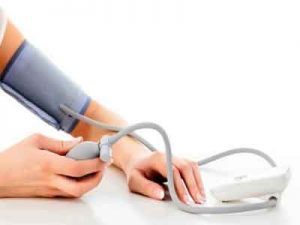- Home
- Editorial
- News
- Practice Guidelines
- Anesthesiology Guidelines
- Cancer Guidelines
- Cardiac Sciences Guidelines
- Critical Care Guidelines
- Dentistry Guidelines
- Dermatology Guidelines
- Diabetes and Endo Guidelines
- Diagnostics Guidelines
- ENT Guidelines
- Featured Practice Guidelines
- Gastroenterology Guidelines
- Geriatrics Guidelines
- Medicine Guidelines
- Nephrology Guidelines
- Neurosciences Guidelines
- Obs and Gynae Guidelines
- Ophthalmology Guidelines
- Orthopaedics Guidelines
- Paediatrics Guidelines
- Psychiatry Guidelines
- Pulmonology Guidelines
- Radiology Guidelines
- Surgery Guidelines
- Urology Guidelines
Myocarditis with Hypotension after a Scorpion Sting

Scorpion stings are common in India and painful but rarely life-threatening. Young children and sometimes the very old are at risk of serious complications. A 24 year old female patient was referred with myocarditis after a scorpion sting on left point finger. The patient was treated with noradrenaline, epinephrine, and dopamine infusion. After a week of therapy, patient was discharged following recovery. This case report emphasizes the occurrence of myocarditis after severe scorpion sting.
A 24-year-old female patient presented with a scorpion bite while she was working in farms at her village. Her associated complaints were tachycardia, and hypotension; immediately she was taken to nearby hospital and treated with tablet acetaminophen, injection noradrenaline, and injection dopamine. She came to our emergency department where electrocardiogram (ECG) was taken prior and she was shifted to Intensive Cardiac Care Unit (ICCU) for further treatment. She had a history of one episode of vomiting before hospital admission. The ECG report revealed sinus tachycardia, left anterior hemi-block, antero-septal myocardial infarction; 2D ECHO (echocardiogram) displayed global hypokinesia and severe dysfunction of left ventricle. Chest X-ray was suggestive of right upper lobe consolidation and left mid-zone patchy consolidation. Troponin-T was positive in this patient. Her random blood sugar, electrolytes, serum creatinine and C-reactive protein were normal. Hematological report showed increased neutrophils, while arterial blood gas analysis (ABG) showed decreased partial carbon dioxide (pCO2), and bicarbonates and increased partial oxygen (pO2).
The complications observed due to scorpion sting in this patient were myocarditis, mild mitral regurgitation, left ventricle dysfunction, hypotension, shock, acute kidney injury, bilateral pneumonia. The patient was treated for all complications; recovered and got discharged without any complaints. Before discharge, the patient was counseled about lifestyle changes that includesdon’t store firewood near the house or inside, wear shoes, gloves and long sleeves and pants while working in farms to avoid scorpion bite.
Scorpion stings are a major public health problem in many tropical countries. Scorpion venom is a water-soluble, antigenic, heterogenous mixture, as demonstrated on electrophoresis studies. This heterogeneity accounts for the variable patient reactions to the scorpion sting [4]. The venom produces both local as well as systemic reactions. Local reactions consist of itching, edema and ecchymosis with burning pain. Absorption of the venom from scorpion - sting site occurs in 7-8 hours. 70% of maximum concentration of venom in the blood will be reached within 15 minutes and thentime needed to reach maximum venom blood concentration is 101 ± 8 minutes in experimental animals, half-life of intravenously injected venom is between 4 to 7 minutes and takes 4.2 to 13.4 hours for elimination from blood [5].
Most deaths occur during the first 24 hours after the sting and are secondary to respiratory or cardiovascular failure resulting from autonomic excitation. Cardiac dysfunctions are attributed to catecholamine-induced increases in myocardial metabolism and oxygen demand. It leads to myocardial ischemia-induced myocardial hypoperfusion and to the direct effects of the toxin (leading to myocarditis) [6]. The direct cardiotoxic effect of venom can cause myocarditis by reduction of Na+-K+-ATPase and by releasing noradrenaline and adrenaline from neurons, ganglia and adrenals, thus increasing myocardial oxygen demand by direct chronotropic and inotropic effect on already compromised myocardial blood supply [7]. The venom is a powerful arrhythmogenic agent. The actions of venom are inhibited by prazosin, atropine, propranolol and phentolamine [8]. The ECG changes are nonspecific but may sometimes suggest myocardial infarction and several types of arrhythmias (both tacky and brady types) have been reported [9].
Myocardial ischemia is not only due to the release of catecholamines but also due to effect of cytokines and/or neuropeptide Y on coronary vessels. Cardiac damage might be enhanced by the depressive effect of cytokines upon myocardial cells. Hyperglycemia may also contribute to myocardial injury [10]. Valdivia et al. [11] reported a series of 32 children with scorpion bites who developed cardiac complications. Among these, 50% exhibited myocarditis, 12.5% had subclinical disease, and 63% had observable ECG changes. We observed both ECG changes and myocarditis in this case.
It was Concluded that myocarditis is an important cause of morbidity and mortality following scorpion sting. High index of suspiction and serial ECG monitoring is required to recognize this complication and institute appropriate management.
For more details click on the following link: http://dx.doi.org/10.17659/01.2017.0076
bilateral pneumoniaHematologicalhypotensionIntensive Cardiac Care UnitMesobuthus tamulusmyocarditispartial oxygen
Next Story
NO DATA FOUND

Disclaimer: This site is primarily intended for healthcare professionals. Any content/information on this website does not replace the advice of medical and/or health professionals and should not be construed as medical/diagnostic advice/endorsement or prescription. Use of this site is subject to our terms of use, privacy policy, advertisement policy. © 2020 Minerva Medical Treatment Pvt Ltd